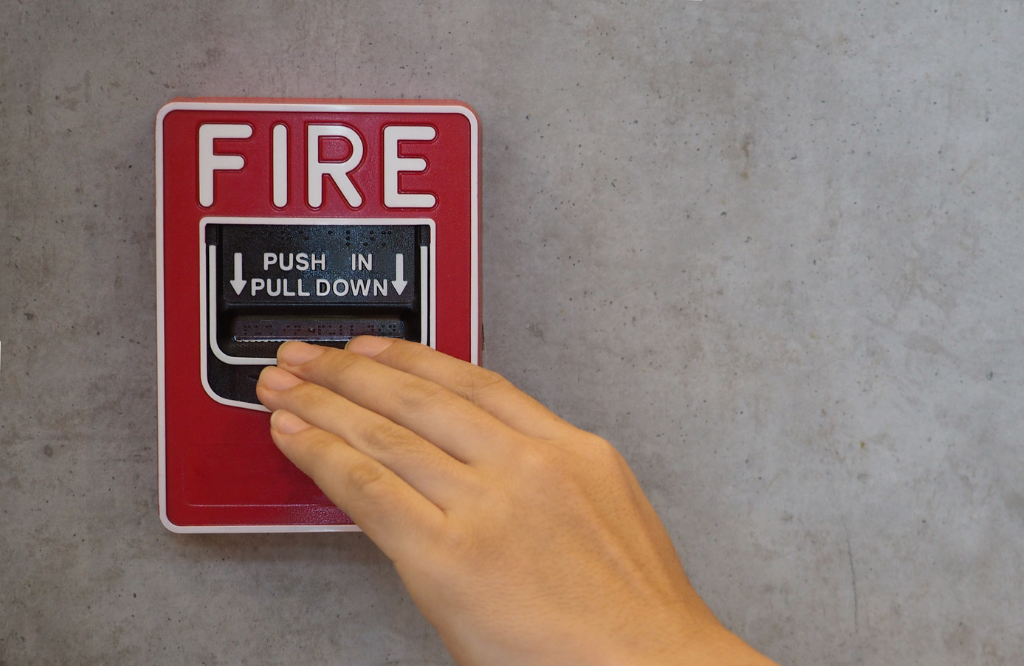Fire risk assessments are essential for any workplace aiming to keep employees and visitors safe. Whether you manage a small office or a large factory, understanding fire risk assessments and how they impact your business is crucial. Let’s break down everything you need to know, so you feel confident about keeping your workplace safe from fire hazards. This fire risk assessment guide will delve further into everything you need to know.

What is a Fire Risk Assessment?
Firstly, a fire risk assessment is a structured review of your workplace to identify fire hazards, assess risks and create a plan to control or eliminate them. In the UK, these assessments are a legal requirement under the Regulatory Reform (Fire Safety) Order 2005. This law mandates employers, building owners or anyone in control of premises to take responsibility for fire safety.
At its core, a fire risk assessment is about more than ticking boxes. It’s about keeping your workplace safe and compliant, ensuring every person on site is protected in case of fire. As an employer, understanding this duty helps you meet legal requirements and keeps your staff safe as well as your workplace running smoothly.
Why Fire Risk Assessments are Important?
The importance of fire risk assessments can’t be overstated. Fires in workplaces can lead to severe injuries, property loss and even fatalities. They can also result in costly downtime and legal issues for employers. In short, failing to address fire safety can lead to significant harm and even business closures. By conducting regular fire risk assessments, you not only protect lives but also demonstrate your commitment to workplace safety.
Employers have a duty to regularly assess fire risks and take steps to mitigate them. This includes checking fire doors, emergency exits, fire alarms and ensuring escape routes are clear. Staying on top of these assessments also means you’ll be prepared for unannounced inspections, which the HSE can carry out at any time to ensure compliance.

Key Steps in a Fire Risk Assessment
Completing a fire risk assessment involves five main steps. Each step plays a critical role in keeping your workplace safe.
- Identify Fire Hazards: Look for any potential fire hazards in your workplace. This includes flammable materials, faulty electrical equipment and combustible waste.
- Identify People at Risk: Consider everyone who might be affected in case of a fire. This includes employees, visitors, contractors and anyone with mobility issues who may need extra assistance.
- Evaluate and Act on the Risks: Assess how likely a fire is and its potential impact. Reduce the identified risks wherever possible. This may involve installing fire alarms, removing hazards and educating employees on fire safety practices.
- Record and Plan: Document your findings and create a fire safety plan. Make sure this plan is accessible to everyone in the workplace and includes escape routes, assembly points and emergency contacts.
- Review Regularly: Fire risk assessments aren’t a one-off task. You should review and update them periodically or whenever significant changes occur in your workplace. Regular reviews ensure ongoing workplace safety and compliance.
Employer Duties and Legal Obligations
As an employer, you have a legal duty to conduct and review fire risk assessments annually. This duty extends to ensuring that all fire safety measures, such as alarms and extinguishers are in working order and accessible. You’re also responsible for training staff on fire procedures and conducting regular fire drills. Staying compliant with these responsibilities not only protects your team but also reduces the risk of fines or legal issues for failing to meet fire safety standards.
Failing to conduct a fire risk assessment or ignoring identified hazards could have serious consequences, including fines and legal penalties. By understanding and fulfilling your duty, you can feel confident in your workplace safety efforts.

Practical Tips for a Safer Workplace
Ensuring fire safety doesn’t have to be complex. Here are some practical tips to help maintain a safe workplace:
- Conduct Regular Drills: Hold fire drills at least once a year so everyone knows what to do in an emergency.
- Keep Exits Clear: Make sure escape routes are never obstructed and all fire doors are working properly.
- Check Equipment Regularly: Test alarms and extinguishers on a regular schedule to ensure they function properly.
- Train Your Team: Educate employees on basic fire safety practices, such as reporting hazards and knowing where to go in case of a fire.
- Remove Hazards: Keep work areas tidy and properly store flammable materials to reduce fire risks.
By following these tips, you’ll create a workplace culture that values safety and readiness.
How Often Should Fire Risk Assessments Be Carried Out?
In most cases, a fire risk assessment should be reviewed every 12 months, especially if there are changes to the workplace layout, new equipment or changes in staff. Regular updates keep your business compliant and your employees safe. Some industries, like manufacturing or hospitality, may require more frequent reviews due to higher fire risks.

Wrapping Up: Your Commitment to Workplace Safety
Fire risk assessments are a vital part of workplace safety and a legal duty for employers. By taking proactive steps, you demonstrate that you value the safety and well-being of everyone in your workplace. Staying compliant with fire safety regulations not only reduces risks but also ensures your business is well-prepared for inspections.
Remember, workplace safety is an ongoing commitment. Regularly reviewing your fire risk assessment, addressing new hazards, and educating your staff are all part of your duty as an employer. A safer workplace is a happier, more productive place for everyone. If you are looking for competent fire safety services or a fire risk assessment from a company that is trusted nationwide, click here.
